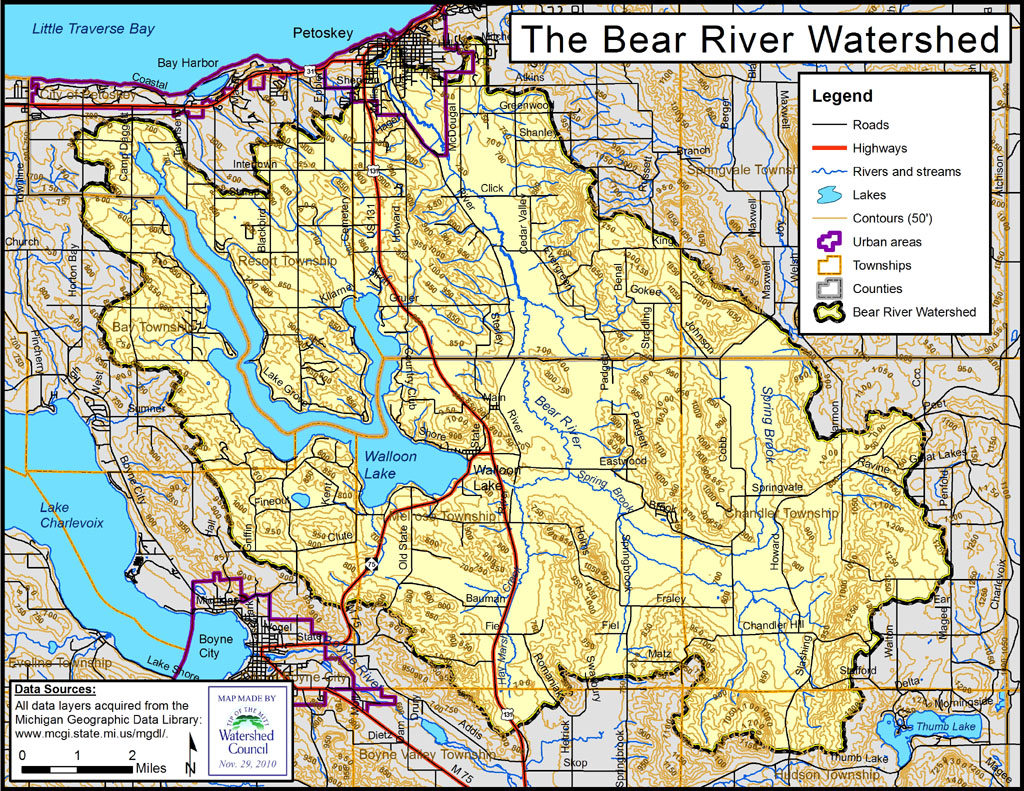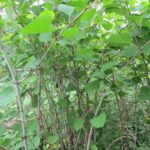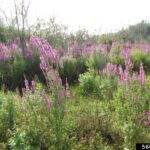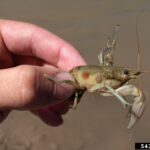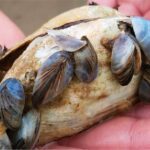Description:
Today, all but two of the historic dams have been removed from the river, restoring a more natural flow and passage of aquatic organisms. The Lake St. Dam, largest of the two, still remains near the mouth, interrupting fish like salmon and steelhead on their journey upstream to spawn, while at the same time preventing the invasive sea lamprey, which has had a disastrous effect on Great Lakes fisheries, from being able to use the river as spawning grounds. Upstream of the dam, the Bear River supports a native brook trout fishery.
The Bear is vegetated along almost all of its length, and wildlife frequent its banks. It is a source of pride to members of the community, who use it for paddling, fishing, whitewater kayaking, wildlife viewing, morning walks, and many other forms of recreation.
Other Threats to Water Quality
- Nonpoint source pollution
- Eroding riverbanks
- Shoreline development
- Trash
- Habitat loss
- Road/stream crossings
Monitoring The Bear River is monitored every three years through the Watershed Council’s Comprehensive Water Quality Monitoring (CWQM) Program for dissolved oxygen, specific conductivity, pH, nitrate-nitrogen, total nitrogen, total phosphorus, chloride levels, and total suspended solids. Biological monitoring is also performed by volunteers in the Bear River each spring and fall as part of the Watershed Council’s Volunteer Stream Monitoring (VSM) Program. |
This stream is monitored through the Little Traverse Bay Bands of Odawa Indians Surface Water Quality Protection Program (SWQPP).
The Little Traverse Bay Watershed Protection Plan and its Advisory Committee are working to protect the river, as it directly influences the water quality of the Bay.
Additional Resources:
| Title | Link |
|---|---|
| Comprehensive Water Quality Monitoring (CWQM) |
